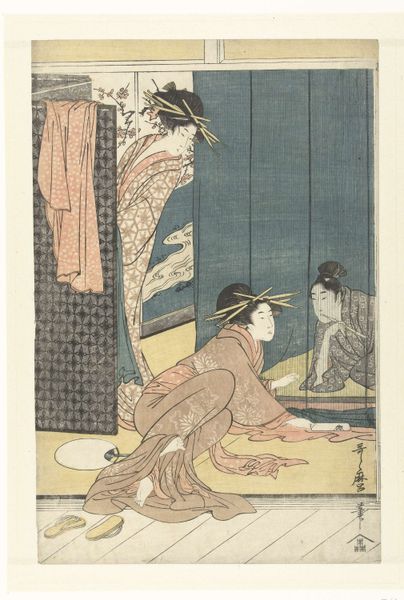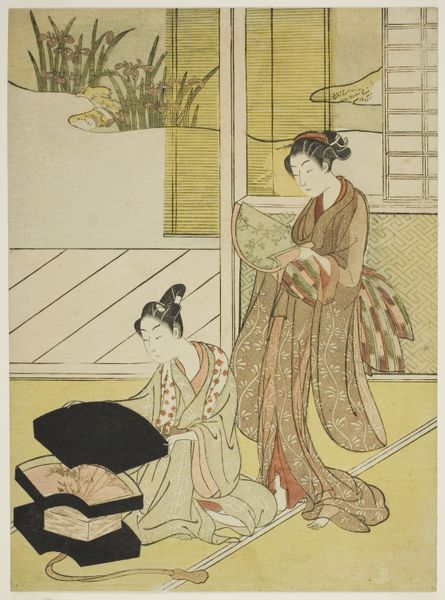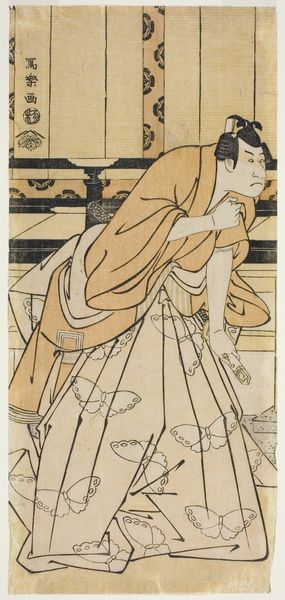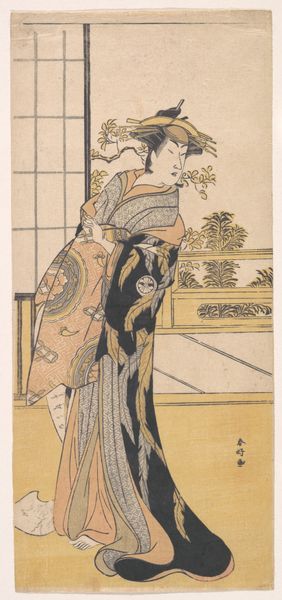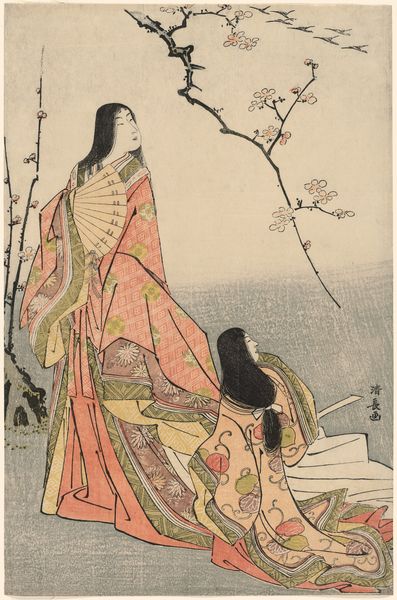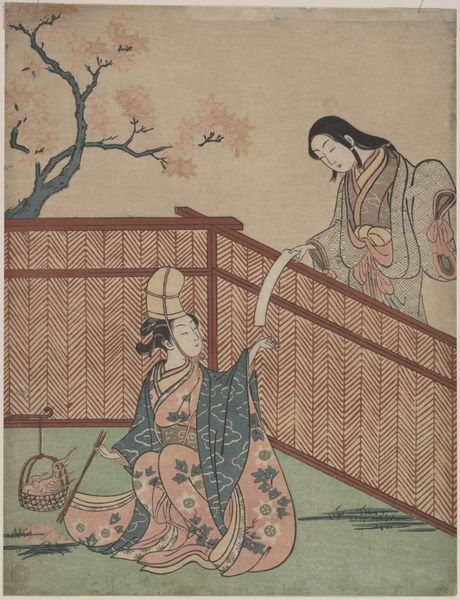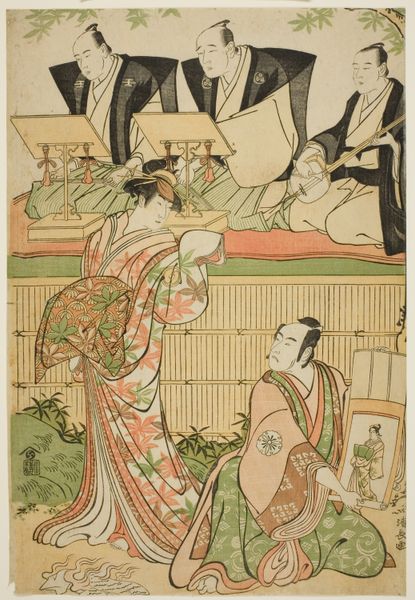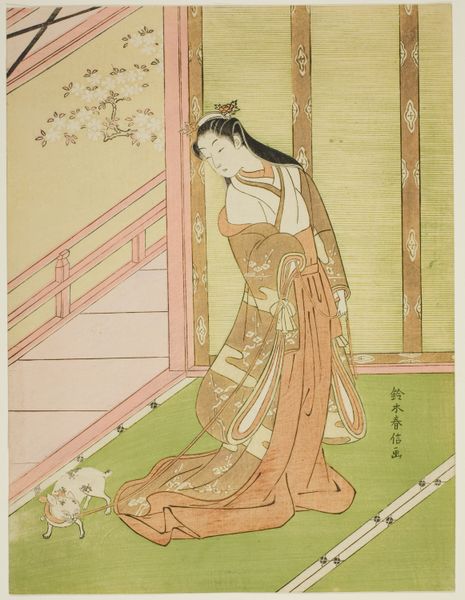
print, woodblock-print
#
portrait
# print
#
asian-art
#
ukiyo-e
#
figuration
#
woodblock-print
#
genre-painting
Dimensions: Aiban; 13 1/4 x 9 7/8 in. (33.7 x 25.1 cm)
Copyright: Public Domain
Curator: Alright, let's take a look at this stunning ukiyo-e print, "The Third Princess (Onna San no Miya)" by Torii Kiyonaga, dating back to between 1781 and 1789. Editor: Wow, just from looking at it, I get this sense of quiet melancholy. It's subtle, though, almost dreamlike with its pale colours and elongated figures. Is this typical of the genre? Curator: Indeed, Kiyonaga, while working in the classic tradition of ukiyo-e, has elongated his figures, focusing on depicting these courtly women with elegant poise. The print, a woodblock made of ink and colour on paper, really gives that gentle sensibility. Editor: Tell me more about that elongation, it is almost Mannerist. It creates this… interesting contrast with the very grounded subject matter. It reminds me of those really stretched-out Parmigianino Madonnas, you know? Curator: That’s a fascinating point. It distances the scene from pure naturalism. Observe the geometry in the robes and sliding doors contrasting with the soft contours of the women’s faces and the botanical detail. Editor: I see it now! There’s a controlled, deliberate feel to the composition as a whole, particularly within how the textile patterns and the blossoming peony add detail. So this formal rigidity must indicate something symbolically? Curator: Kiyonaga balances realism with symbolism through careful compositional and iconographic detail. The print alludes to "The Tale of Genji" and speaks to Heian court culture. Each gesture, down to the arrangement of their kimono, tells its own story of duty and beauty. Editor: It really gives a feeling for these interior lives, doesn't it? What I'm drawn to most is this strange tension between private contemplation and the performance of courtly life. I could sit here for hours finding new subtleties! Curator: Yes, exactly. And the beauty of ukiyo-e, particularly Kiyonaga's work, is that it continues to invite multiple readings. Its charm comes precisely from that visual richness, this balanced synthesis, open to our interpretation and admiration. Editor: So, beyond just enjoying the pretty picture, we’re stepping into a whole world, complete with rules and rituals—an echo of history itself. Amazing!
Comments
No comments
Be the first to comment and join the conversation on the ultimate creative platform.
